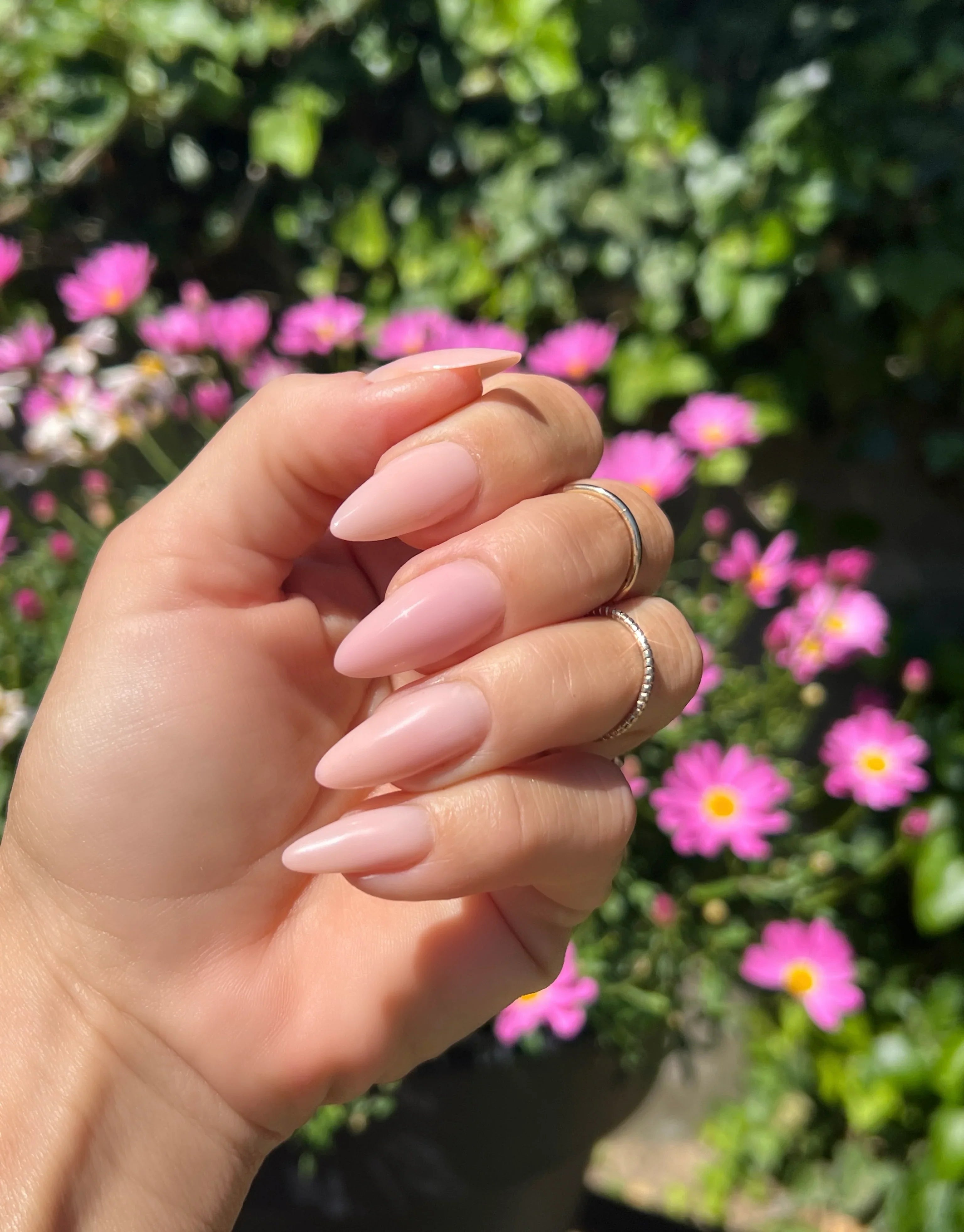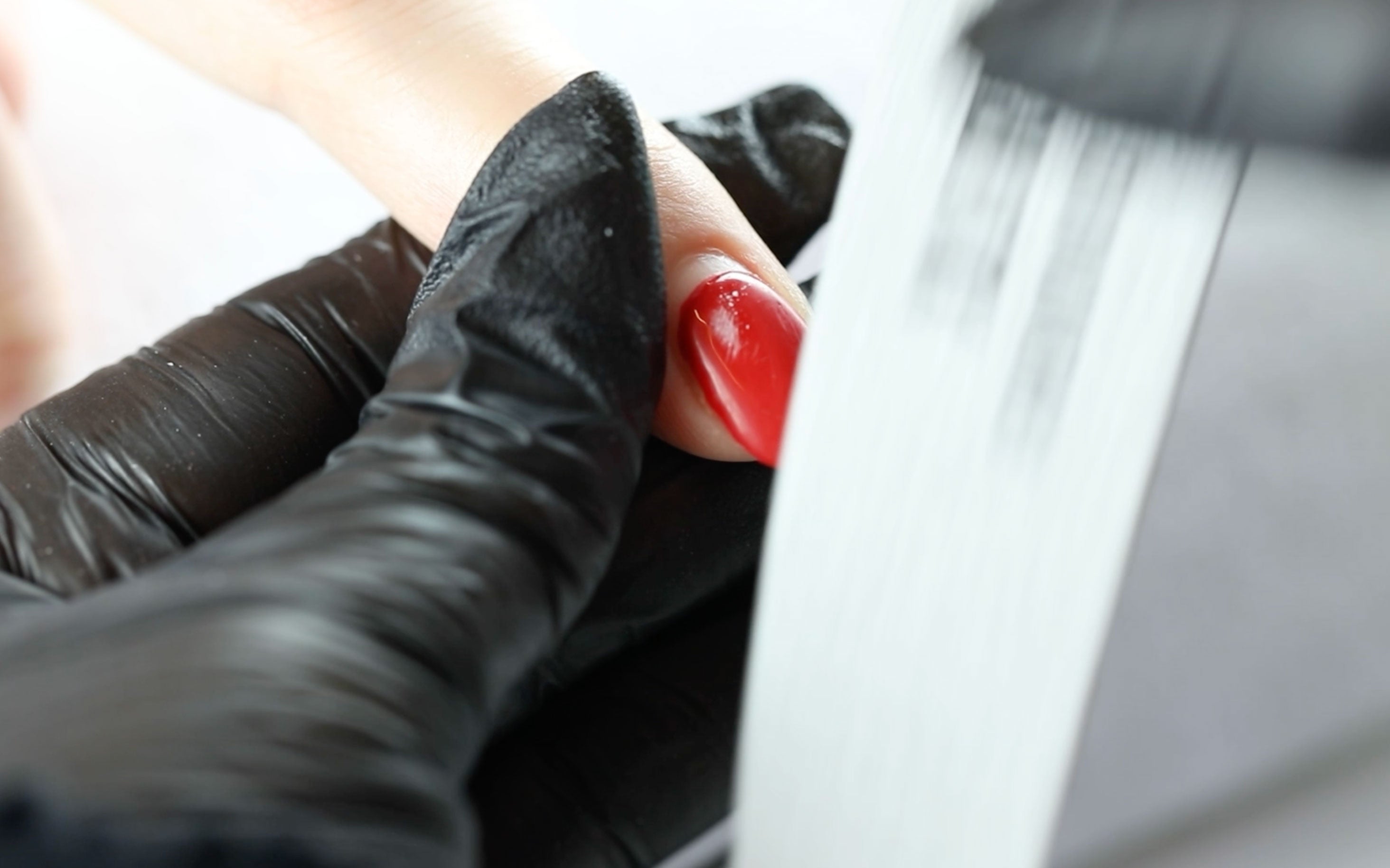Acrylic nail allergy
Do you suspect a nail allergy? Or do you just want to be ahead of the curve and avoid the risks associated with using acrylic to make artificial nails? As soon as the product comes into contact with the skin, there will always be a risk of developing an allergy.
In this blog post, we make you smarter about how to avoid developing allergies by instead choosing the right nail products that contain fewer chemicals.
What is acrylic nail allergy?
Acrylic nails contain acrylates, which can cause allergies when it comes into contact with the skin. Acrylates are intended to harden the nail polish when the nail is exposed to UV light. Hydroxyethyl methacrylate (HEMA) is often one of the acrylates added to the nail polish and used in the curing process. When you apply acrylic, the varnish can penetrate the nail or come into contact with the skin and cause allergies.
Hydroxyethyl methacrylate (HEMA) is often one of the acrylates added to the lacquer and used in the curing process. When you apply acrylic, the varnish can penetrate the nail or come into contact with the skin and cause allergies.
It is worth remembering that acrylic varnish can be allergenic in its liquid state. Once the acrylic has hardened, there is no risk of allergies. Therefore, avoid all contact with the skin during application.
Once you develop an acrylic nail allergy, you have to live with it for the rest of your life. In addition to skin contact, inhaling acrylic vapors is harmful. The liquid itself has a very strong odor and vapor, which requires proper ventilation.
Mastering acrylic nails requires both great knowledge and practice. That is why many choose to have them done by a professional nail technician.
Signs of an acrylic allergy
If you experience the following, it may be a sign of an acrylic allergy. Always remember to see your doctor if you are in doubt.
- Blush
- Swelling
- Itch
- Scaly skin
- Cracks in the skin
- Small blisters
Acrylic allergy is most often manifested by red and swollen fingers, which are accompanied by itching and burning. The skin may also begin to crack and peel. It is very similar to an eczema outbreak. Some also experience small blisters that turn into sores when they pop.
You can develop an acrylic nail allergy regardless of whether you do your nails at home or have them done by a nail technician.
Gel polish from Nail4You is HEMA-free
Looking for an alternative to acrylic nails? Gel polish is both healthier and the result is prettier and more natural than acrylic nails.
At Nail4You, we do not compromise on quality or your health. That is why all N4Y gel polishes are HEMA-free, and we have carefully formulated the ingredients so that they contain fewer chemicals that are gentle on nails and cuticles. In addition, our products comply with Danish legislation and are only sold within the EU.
Our gel polish is also free from formaldehyde, toluene and dibutyl phthalate (DBP), which are a number of dangerous substances that can contribute to the development of allergies. It is not only our gel polish that is gentle on your skin. The same applies to N4Y basecoat and topcoat .
Although the product focuses on minimizing chemicals, you will still experience the same high quality. You can therefore safely apply our gel polish with a clear conscience and leave home with the most beautiful fingertips, fantastic shine and a long-lasting result.
That's why you should choose gel polish from Nail4You:
- HEMA-free
- DBP-free
- Contains fewer chemicals
- Complies with Danish legislation
- Only traded within the EU
Do you lack inspiration for how to get started with creating the most beautiful nails? Choose one of our starter packages that contain everything you need to get started. You are also welcome to contact us if you need guidance on choosing products.
Sources:
https://mst.dk/borger/sundhed-og-kemi/personlig-pleje/kunstige-negle
https://www.videncenterforallergi.dk/produkter/kunstige_negle_og_gelneglelak/
https://www.astma-allergi.dk/viden-om/kontakteksem/allergisk-kontakteksem/limstoffer/akrylater/
https://illvid.dk/sundhed/advarsel-kemiske-stoffer-i-neglelak-kan-medfoere-livsvarig-allergi


